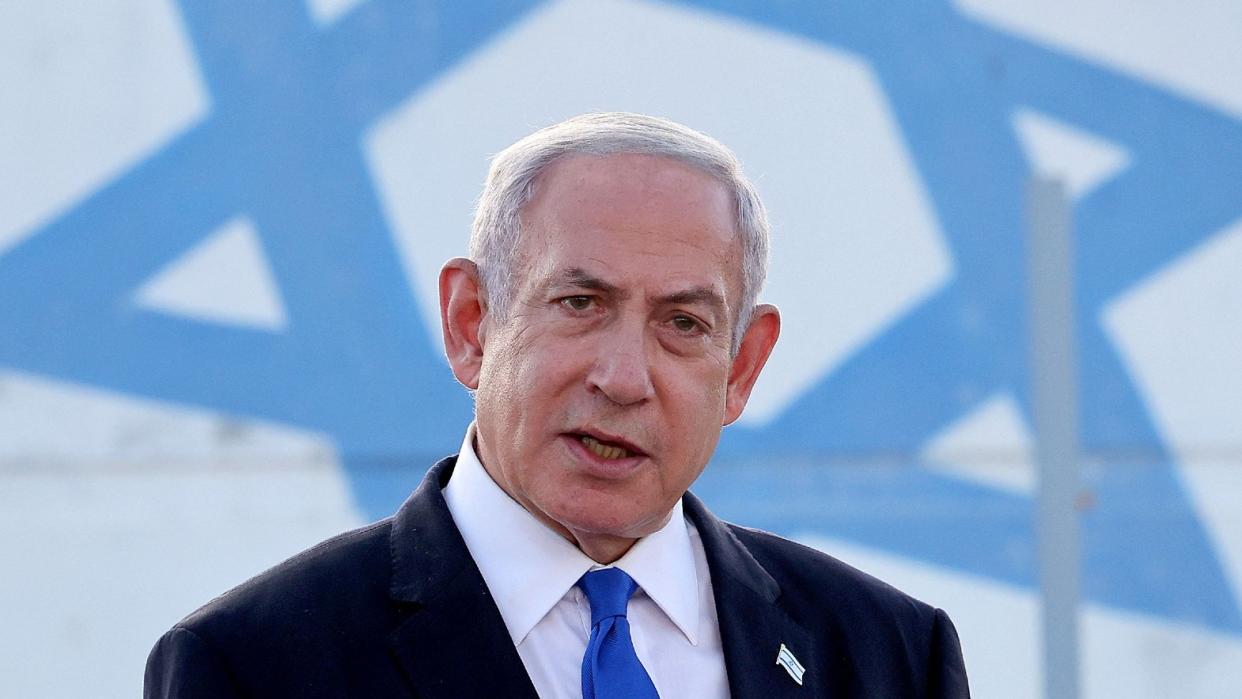Israel-Palestine: why did the Oslo accords fail?

- Oops!Something went wrong.Please try again later.
- Oops!Something went wrong.Please try again later.
- Oops!Something went wrong.Please try again later.
Secret negotiations in Norway led to a deal, made public as "the Oslo Accords", signed in September 1993 by the Palestine Liberation Organisation's Yasser Arafat and Israel's Labour Prime Pinister Yitzhak Rabin in Washington.
Often deemed a historic breakthrough, the deal meant that the PLO recognised the State of Israel for the first time, and Israel recognised the PLO as the representative of the Palestinians. It allowed for the self-administration of major Palestinian population areas by a new Palestinian Authority, led by Arafat, although the majority of the West Bank remained under joint or sole Israeli control.
Ongoing negotiations were supposed to resolve the difficult "final status" issues by 1999: the exact borders of a new Palestinian state; the status of Jerusalem; the fate of Palestinian refugees and their descendants (by then numbering more than three million); Israel's settlements; and Israel's security arrangements. The interim period was supposed to build both mutual trust and Palestinian institutions.
Why did the Oslo process fail?
The pro-Israeli answer is that Arafat flatly rejected the best offer of peace, made by Prime Minister Ehud Barak at the Camp David Summit in 2000, and did little to quell the Second Intifada, with its Hamas suicide bombings against Israeli civilians, that erupted soon after.
The pro-Palestinian answer is that the offer fell well short of what Arafat could accept and survive politically. He had made a historic compromise in conceding that the Palestinian state should exist on only the occupied territories, 22% of mandate Palestine; but Israel wanted still more (it proposed to annex 9% of the West Bank, in return for a smaller amount of Israeli land elsewhere; there would be compensation for refugees, but no right of return).
And even while the peace process was under way, the number of Jewish settlers in the occupied territories continued to grow: from 250,000 in 1993 to 400,000 in 2003.
Is a two-state solution possible?
At times, negotiators came very close to a deal. But major stumbling blocks remained, primarily the issues of land and refugee return – and there is little room for manoeuvre, in a state not much larger than Wales.
There are also sizeable constituencies on both sides that want no compromise –particularly on the Palestinian side, embodied in Hamas, but also in the form of 471,000 Jewish settlers in the West Bank and 229,000 in East Jerusalem, and their political allies.
Both sides have their rival narratives and grievances. The Palestinians point to the loss of their land since 1948, the repression and the suffering they have endured; Israel to the constant attacks it has faced throughout its history. Now, with both sides more distrustful and traumatised than ever, a solution seems very far away.
After the peace process fell apart, the same right-wing Likud Israeli leaders who had helped to derail it – Ariel Sharon and Benjamin Netanyahu – moved to a unilateral process of "disengagement".
A barrier was built in the West Bank, roughly along the pre-1967 border, to keep terrorists out, but also to annex Palestinian land. In 2005, Sharon withdrew from Gaza, and removed Jewish settlements (while still controlling its borders).
In 2006, Hamas won an election in the Palestinian Territories, and took control in Gaza after a short civil war with Arafat's party, Fatah. Netanyahu, "Mr Security", responded by building a billion-dollar security barrier around Gaza. He boasted that Israel had never been more peaceful than under his rule.
Many Israelis accepted his view that the Palestinians could be managed in this way; wrongly, as 7 October showed. It also left fundamental problems. Without a two-state solution, there is only one state, within which most Palestinians are second-class citizens. But if theIsraelis give full rights to Palestinians in the occupied territories, Jewish people are likely to be a minority.
As Ehud Barak said: "As long as in this territory west of the Jordan there is only one political entity called Israel, it is going to be either non-Jewish or non-democratic."

